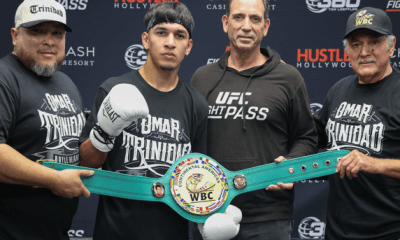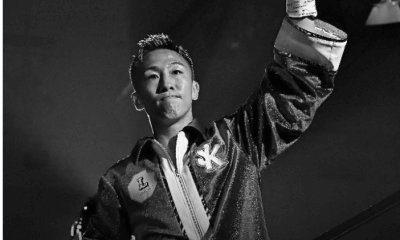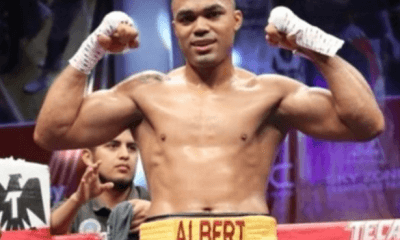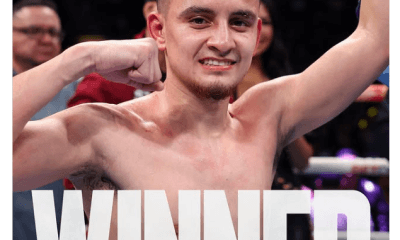Featured Articles
Boxing Writer Mike Marley Was a Colorful Character
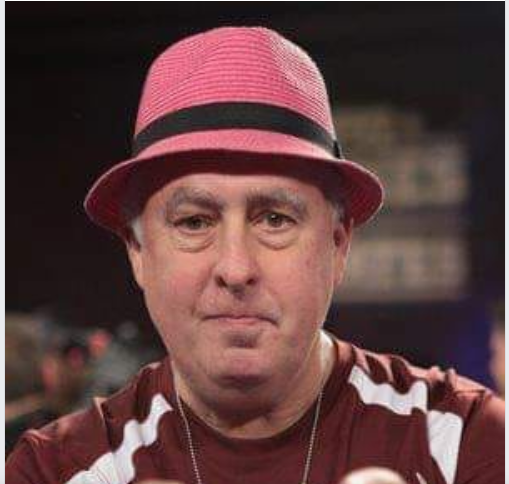
Mike Marley wore many hats during a career in boxing that began when he was 13 years old. At various times, Marley was a PR man, a facilitator in all of its various permutations, a production assistant for Howard Cosell, and a boxing writer for several newspapers, most notably the New York Post. He was also as colorful as many of the sporting characters that he wrote about, a fellow who made friends and enemies in about equal measure. His death this past week from complications of Parkinson’s left his friends ruing the loss of a great raconteur.
As a boy growing up in Boston, Marley became infatuated with the boxer then known as Cassius Clay. He started a fan club for the up-and-coming heavyweight, the spawn of which was an annual newsletter he sold for $5.
Marley got to meet his hero when Ali came to Boston in the spring of 1965 to finish up his training for his rematch with Sonny Liston slated for May 25 at Boston Garden. Marley tracked Ali down to the hotel where he was staying and became a regular visitor. Ali took a shine to the 14-year-old fanboy and young Michael became something of a mascot.
Ali-Liston II would be kicked out of Boston — the District Attorney was sending a message to Liston’s underworld associates – and re-positioned in the neighboring state of Maine where it played out on the originally scheduled date at an armory in Lewiston. Mike Marley was there as a guest of Ali and he would also have a choice seat at Ali-Frazier I, the Fight of the Century in the new Madison Square Garden.
During his teen years, Marley hooked up with Sam Silverman. Best remembered for promoting the early fights of Rocky Marciano, “Subway Sam” was Mr. Boxing in New England. With an office in Chelsea and an annex in the trunk of his car, Silverman promoted big-budget and low-budget shows, but mostly the latter, during a career that was in its fifth decade when he died in a car crash in 1977.
Marley designed little programs for Silverman’s little shows and delivered envelopes to sports editors, honorariums much appreciated, especially by scribes toiling in the hinterland.
Mike Marley ventured a long way from home to attend college. He chose Nevada’s flagship university in Reno because of the school’s prominent boxing team.
Mike wasn’t too bad with the mitts. Competing mostly at 165 pounds, he was purportedly 7-2-4 in inter-collegiate competitions, a record highlighted by a first-round knockout of an opponent from Stanford.
Marley wasn’t completely done with fisticuffing when he left college. In 1991, he scuffled with Patrick Flannery, the manager of Hector “Macho” Camacho, in the lobby of Reno’s Clarion Hotel. The fracas, which started around 3:00 in the morning, was a nasty little spat. Marley emerged with a swollen forehead and a busted lip. Flannery suffered a broken kneecap.
The scuffle had its roots in a story that Marley wrote for the New York Post following Camacho’s loss to Greg Haugen in their first meeting. Marley blamed Flannery. “If he’s a manager,” he wrote, “then I am an astronaut.” But we are getting ahead of ourselves.
At the University of Nevada, Marley wrote a weekly column called “Campus Chatter” for the school newspaper, which led to work with the Nevada State Journal, a paper with a small circulation, and then to the regionally transcendent Reno Gazette-Journal. Like most sportswriters, he initially covered high school sports and then transitioned to covering sports of national interest; in his case, mostly boxing.
From the Gazette-Journal, Marley moved to the Las Vegas Sun, the city’s afternoon paper (remember afternoon papers?) where he scored a big coup, by his recollection, when he followed up on a tip that led him to a greasy spoon in Flagstaff, Arizona where Roberto Duran’s long-lost biological father was working as a short-order cook. A former seaman, the man was revealed to be of Mexican descent which increased Roberto’s popularity 10-fold in the Latino community. (For the record, this story actually originated in a Flagstaff paper. In the pre-internet days, news didn’t circulate as freely.)
From the Sun, Marley moved to the New York Post where he had two stints as the boxing writer. He first left the paper to serve as an executive producer with ABC’s “SportsBeat.” The show, which won an Emmy Award, was hosted by Howard Cosell who was famed for his work on Monday Night Football and for his interviews with Marley’s hero Muhammad Ali.
Marley left the paper the second time to work for Don King. His business card may have identified him as King’s Public Relations Director but in the company of old friends he snarked to a different title: Minister of Propaganda.
This reporter recalls seeing Marley standing alongside his boss at a boxing press conference where he was reduced to brushing dandruff from the shoulder of King’s one-of-a-kind denim jacket. Why he was there was a mystery as no one ever got a word in edgewise when King had the floor.
The scene didn’t redound well to Marley who had written a lot of negative stuff about King, but perhaps he and the flamboyant promoter were destined to join forces. As boxing writer Robert Mladinich noted, they had a lot in common: “unlimited energy, tremendous egos, and chutzpah.” (Don King wasn’t an easy man to work for. He fired many people only to rehire them the next day. But King paid well and a man caught up in his vortex knew he was alive.)
During his days with the Post, Marley somehow found time to earn a law degree. He graduated from Fordham University Law School at age 40 and became a criminal defense attorney. But he never wandered far from boxing.
He took to managing and co-managing fighters, the list of which included Shannon Briggs, Terry Norris, Derrell Coley, and Julian Letterlough. He also wangled a job as a consultant to California’s Sycuan Indian tribe which ran occasional boxing shows at their casino near San Diego. And he continued to write, his articles appearing on various boxing web sites.
Mike Marley was at his best, it says here, when he was with the New York Post. The tabloid with its lurid front-page headlines that were calculated to boost sales at newsstands (remember newsstands?) was the perfect fit for him and he amped up his game, his stories becoming breezier and more jaundiced.
Marley was part of Muhammad Ali’s inner circle before he was old enough to drive, but in time he came to see the Ali circus in a sobering light. Check out this description of Muhammad Ali’s entourage from a 1979 Post story that was picked up by the Atlanta Constitution:
They moved from city to city, from continent to continent, like a plundering herd. They were boxing’s version of the Foreign Legion.
They came in two categories – those with a real or imagined function, and the hustlers. From Malaysia to Houston, from Zaire to Lake Tahoe, they went first class. Their brush with fame was purely guilt by association. They ran up outrageous tabs and phone bills and charged gifts to Ali. They flimflammed merchants from Manila to Lewiston.
Good stuff.
Mike Marley was 71 years old when he passed away on March 2 in Cape Cod, Massachusetts. He led a very interesting life. May he rest in peace.
—
Arne K. Lang’s latest book, titled “George Dixon, Terry McGovern and the Culture of Boxing in America, 1890-1910,” will shortly roll off the press at McFarland’s. The book may be pre-ordered direct from the publisher (click here) or via Amazon.
To comment on this story in the Fight Forum CLICK HERE
-

 Featured Articles3 weeks ago
Featured Articles3 weeks agoThe Hauser Report: Zayas-Garcia, Pacquiao, Usyk, and the NYSAC
-

 Featured Articles2 weeks ago
Featured Articles2 weeks agoOscar Duarte and Regis Prograis Prevail on an Action-Packed Fight Card in Chicago
-

 Featured Articles1 week ago
Featured Articles1 week agoThe Hauser Report: Cinematic and Literary Notes
-

 Book Review4 days ago
Book Review4 days agoMark Kriegel’s New Book About Mike Tyson is a Must-Read
-

 Featured Articles4 weeks ago
Featured Articles4 weeks agoManny Pacquiao and Mario Barrios Fight to a Draw; Fundora stops Tim Tszyu
-

 Featured Articles4 weeks ago
Featured Articles4 weeks agoArne’s Almanac: Pacquiao-Barrios Redux
-

 Featured Articles3 weeks ago
Featured Articles3 weeks agoRemembering Dwight Muhammad Qawi (1953-2025) and his Triumphant Return to Prison
-
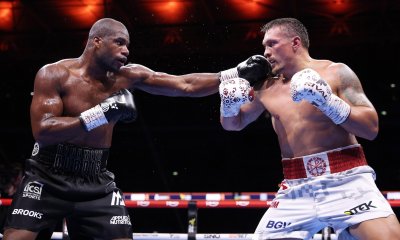
 Featured Articles4 weeks ago
Featured Articles4 weeks agoOleksandr Usyk Continues to Amaze; KOs Daniel Dubois in 5 One-Sided Rounds


